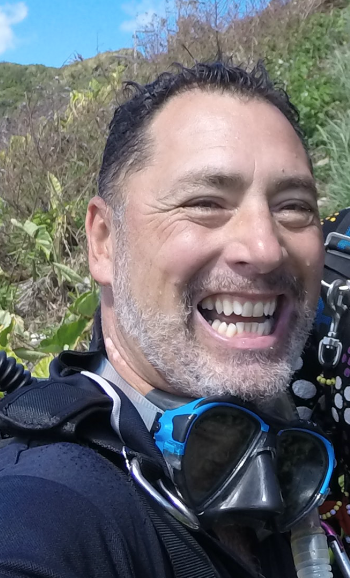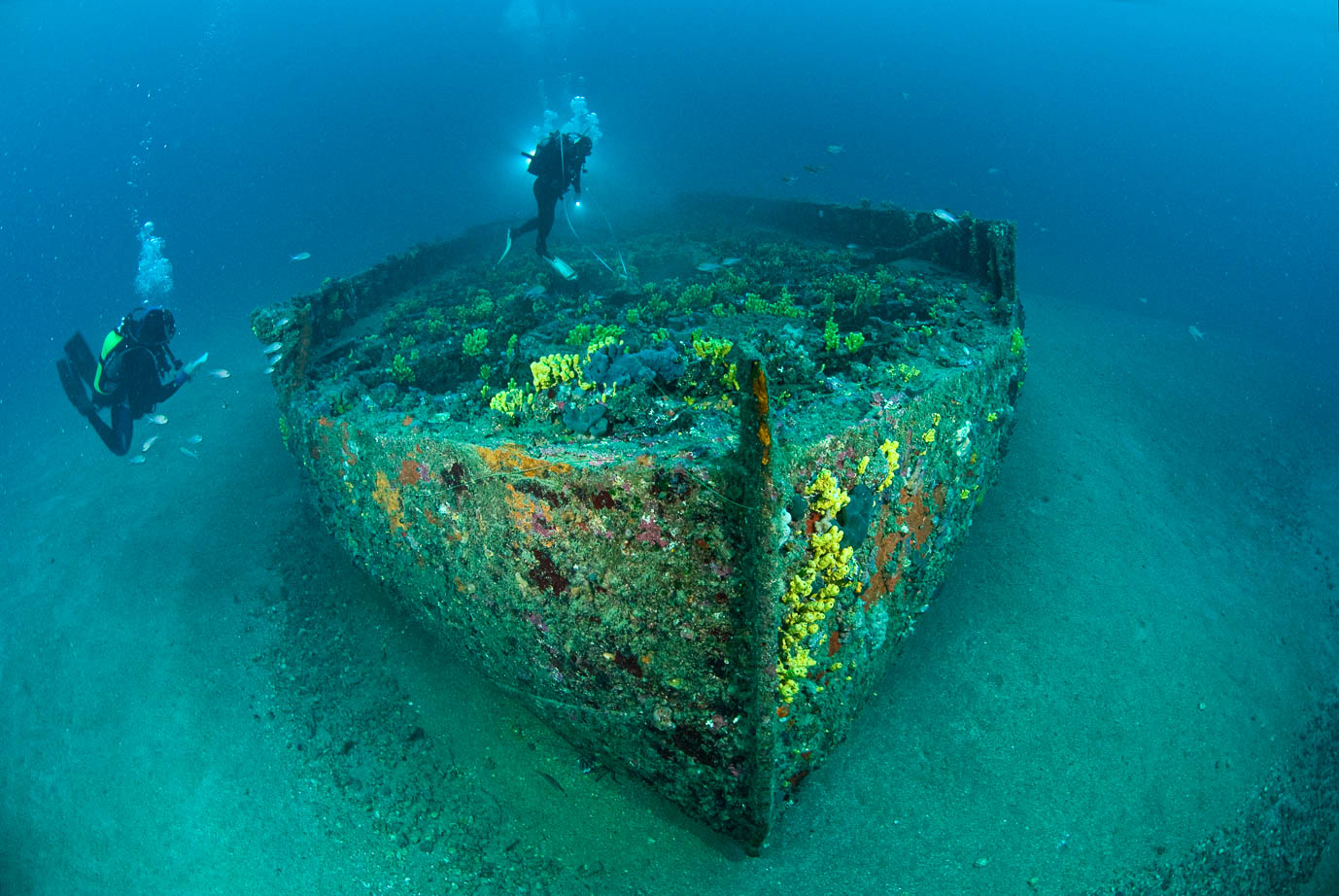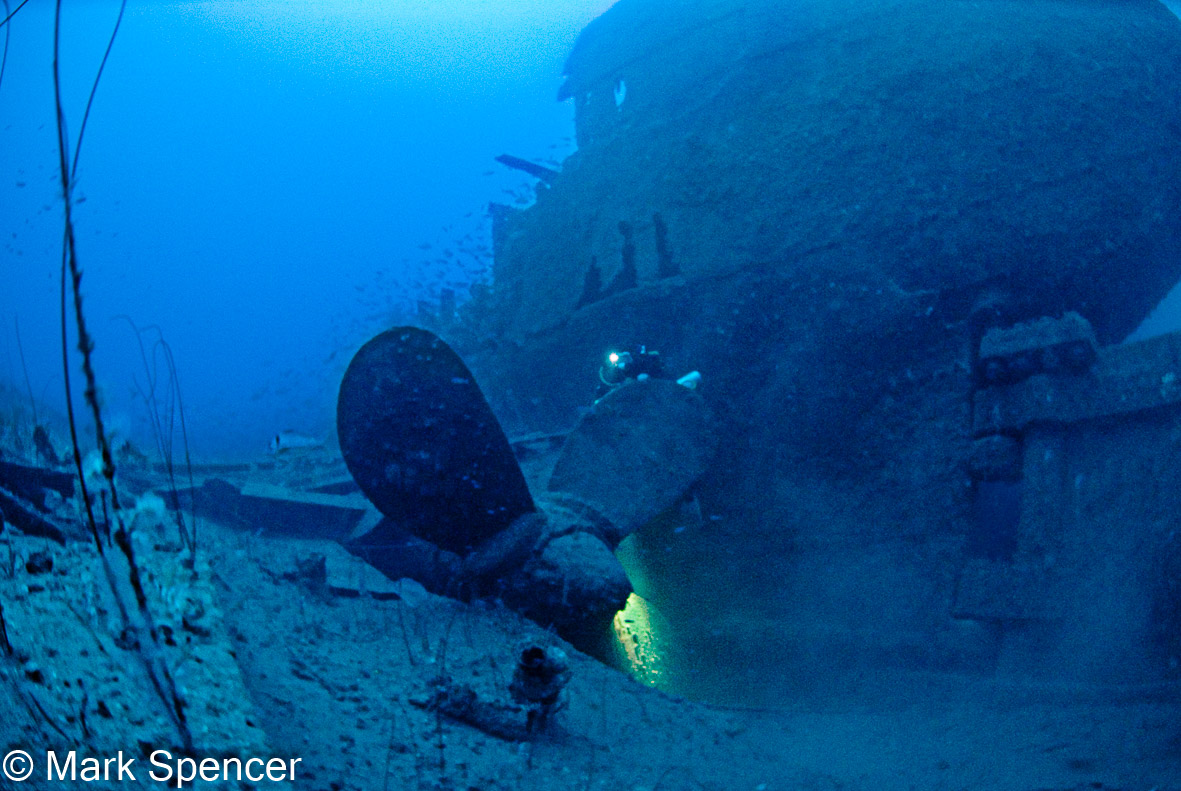Underwater archaeology – preserving our maritime past
The battlefields of Gallipoli remain largely unchanged since 1915. There’s a road there now, as well as cemeteries and memorials, even a museum. But the unforgiving landscape, including many of the trenches, is much the same.
Evidence of the conflict can also be found in the waters around the Gallipoli Peninsula. These include the remains of piers that were lifelines for Allied troops, wrecks of British, Ottoman, German, French and Australian vessels, remnants of shells and bullets fired at bathing soldiers, warships and merchant vessels serving offshore during the campaign.
These remains form an in situ underwater museum that gives visitors the opportunity to dive and explore wartime heritage at Gallipoli.
In parts of the world including in Australia, shipwrecks aren’t so well visited or protected. Many are at risk of illegal salvaging, or are rarely visited by diving enthusiasts.
Dr Andy Viduka (pictured) is largely responsible for protecting Australia’s underwater cultural heritage and navigating the complexities of managing wrecks. He is from the Australian Underwater Cultural Heritage team at the Australian Government Department of Agriculture, Water and the Environment.

When he met with Vetaffairs, Dr Viduka explained there are more than 8,000 wrecks in Australian waters, of which around 5,000 have connections with other countries. These sites are the legacy of more than four centuries of trade and the incursions of global conflict into our waters. Australia’s oldest known wreck is the Trial, which was lost off the coast of Western Australia in 1622.
‘There are very few of us around the country who look after underwater heritage,’ Dr Viduka says. ‘I’m a conservator, I’m a maritime archaeologist, and I got in to my current role because I was interested in preserving the past for the future.’
The remains of Australian vessels are also dotted across the globe. Many of these are the final resting places of Australian military personnel and sailors of the merchant navy.
Caring for this shared underwater heritage involves building relationships with foreign nations that are founded on respect of their rights and recognition of their laws. A common element for all countries is a desire to link the protection and management of heritage with appropriate public access through tourism. This model of site management ensures ongoing benefits to the country and people living near the heritage through tourism. This can outweigh any potential short-term financial gain from salvaging.
‘There are some sites that lend themselves to tourism because they can be managed appropriately, and some that don’t because they are more remote, more complex,’ says Dr Viduka. ‘When a site is disturbed it’s like ripping chapters out of a book. The best way to facilitate the protection of our heritage in foreign waters is to actively support that country’s capacity to preserve that heritage and to collaboratively monitor its condition.’
At times, the search for, and conservation of shipwrecks, is boosted by private interest and funds for high-profile discoveries. This drove the discovery of HMAS Sydney (II) off the coast of Western Australia in 2008 and AHS Centaur’s discovery off Queensland’s coast in 2009. The Sydney had been sunk by the German raider HSK Kormoran on 19 November 1941. Tragically, all 645 officers and crew were killed. The Centaur had been sunk by a Japanese submarine. Of the 332 people on board, only 64 survived.
Tackling the modernisation of Australia’s 1976 historic shipwreck-focused legislation at home has also been a key aspect of Dr Viduka’s career. The introduction of the Underwater Cultural Heritage Act 2018 has made a huge difference in the Australian Government’s ability to protect not only shipwrecks, but submerged aircraft and other underwater cultural heritage, such as Aboriginal and Torres Strait Islander people’s sites.
‘The new Act means all heritage that needs to be protected is able to be protected in our waters, which is a massive outcome and is more inclusive for our society.’
The ocean is still giving up its secrets, with the final resting place of HMAS AE1 discovered off the coast of Papua New Guinea (PNG) in 2017, more than a century after her loss.
HMAS AE1 was one of the first two submarines commissioned into the Royal Australian Navy. The submarine sunk just over a month after the First World War broke out. It was the first Australian vessel lost in the First World War. It sunk with all 35 crew, the largest naval loss of life for Australia in that war.
Dr Viduka says that supporting PNG manage this site is critical to ensuring it is protected for future generations, and the lost submariners are respected. ‘It’s a connection between us and PNG who are fantastic in the way they are working with us to protect that site,’ he says.
‘The highest priority is that the site has to be maintained. A key consideration is the dignified and respectful treatment of the memory of those who lost their lives onboard. The submarine is at a depth where you couldn’t archaeologically recover the whole thing. The site could be subject to salvage activities that would destroy the vessel piecemeal. To avoid this, we are in the early stages of working with PNG to try and manage it in-situ.
‘While well intentioned Australians who would like to see an artefact representing that sacrifice salvaged – it may be damaged. It is therefore important that if any regulated activity, specifically archaeological, is to impact the site, then a detailed research plan be developed. This plan will take into consideration the potential for human remains to be undisturbed among many other factors. As PNG is the regulating authority, our task is to assist them when asked, to achieve an agreed best practice outcome.’
With limited staff and resources, Dr Viduka is calling for people to become ‘public researchers’ and contribute to the Australasian Underwater Cultural Heritage Database. Members of the public can add data, photos and video to records of Australian wrecks and sites.
This online database also allows people to search sites, helping the public access the thousands of recorded shipwrecks.
Dr Viduka believes the more people become part of documenting and conserving our underwater cultural heritage, the better the protection will be for the thousands of shipwrecks in Australian waters and overseas. This will help preserve this history for generations to come, and remind us all of the human cost of maritime conflict.

Above - The remains of a barge off Anzac Cove. It was used to transport wounded troops to hospital ships, and now lies in 54 metres. © Mark Spencer

Above - Remains of SS Cumberland, sunk off the south NSW coast during the Second World War by a mine laid by the German raider Wolf. The wreck sits at 100 metres and was subject to salvage operations in the early 1950s for its copper and lead ingots. © Mark Spencer
